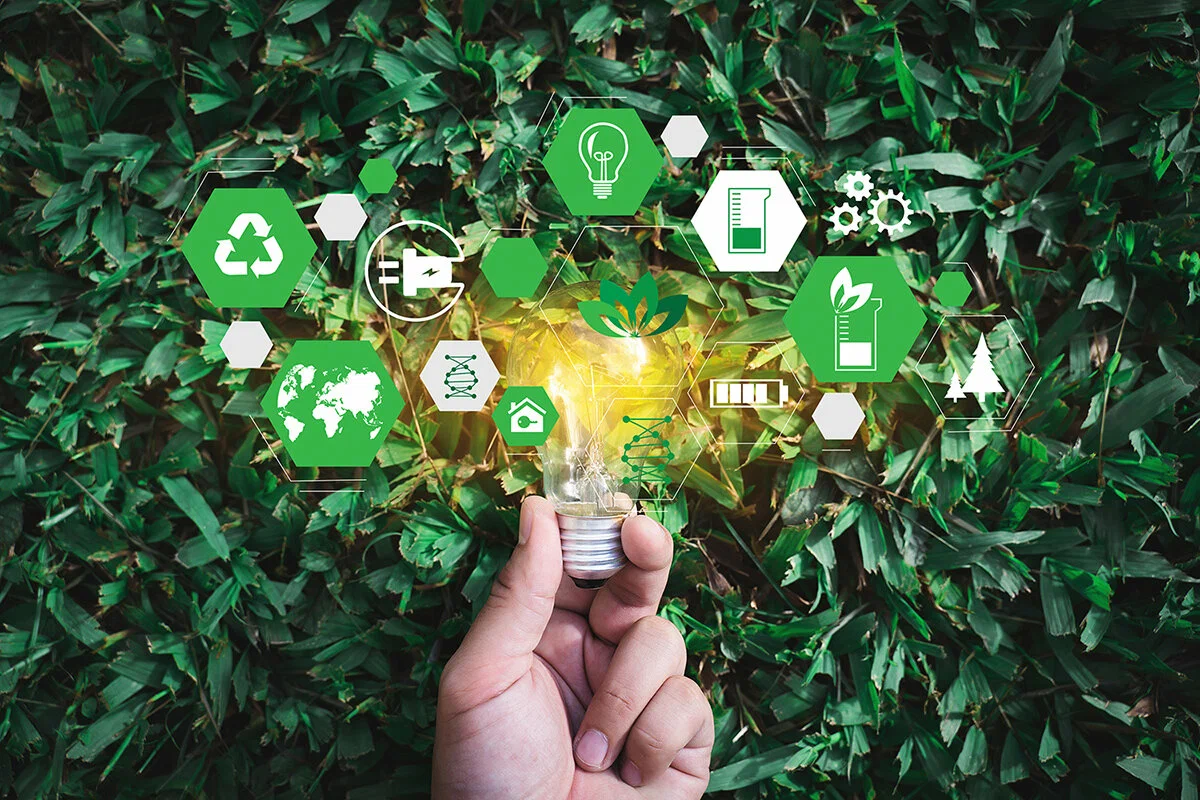When most people think about smart homes, their minds jump to the big, flashy devices: shiny steel robot vacuums gliding across the floor and reporting their progress in 8-bit sound, smart speakers playing music on command and giving jukebox recommendations, or thermostats that adjust the temperature with a wave of your hand. These headline-grabbing gadgets are impressive, but they’re only part of the story. In fact, some of the most valuable smart home upgrades are the ones you don’t see plastered across advertisements—the small, underrated devices that quietly make everyday life smoother, safer, and less stressful.
Smart home technology in 2025 has reached a point where utility matters more than novelty. Instead of just showing off, people want solutions that genuinely save time, cut down on chores, and prevent problems before they happen. That’s where underrated gadgets prove their worth. They’re not TikTok glamorous, but they’re the kind of helpers you find yourself relying on every single day. A smart leak sensor under your sink that prevents thousands in water damage. A curtain controller that opens your blinds every morning without you lifting a finger. A trash can that seals its own bags. These quiet problem-solvers silently keep your house in order without letting out a squeak and integrate within your house management system like they were always there.
The beauty of underrated gadgets is how they address overlooked pain points. Everyone knows vacuuming takes time, but not everyone realizes how often water damage, forgotten lights, or poor air quality disrupt daily life. The right smart devices eliminate those friction points. For example, air quality monitors are gaining traction in 2025, not because they’re trendy, but because they help families understand when to ventilate, clean, or adjust humidity. Likewise, energy-monitoring smart plugs don’t look impressive, but they’re saving households real money every month by revealing hidden power drains.
What makes these gadgets underrated is also what makes them special: they blend so seamlessly into daily routines that you almost forget they’re there. They don’t demand attention, yet they consistently deliver value. And when they’re missing, you notice. As one Reddit user put it when talking about their water sensor: “It’s the cheapest device in my home, but the one that saved me the most stress.” Better than your therapist, these devices take matters into their own hands and solve them for you.
In this guide, we’ll highlight the most underrated smart home gadgets of 2025—the hidden helpers that deserve a spot in your setup. From sensors that guard against disasters to devices that trim down chores you didn’t realize could be automated, these are the upgrades that often fly under the radar but make the biggest difference once you have them.
1. Smart Leak & Water Sensors – Preventing Disasters Before They Happen
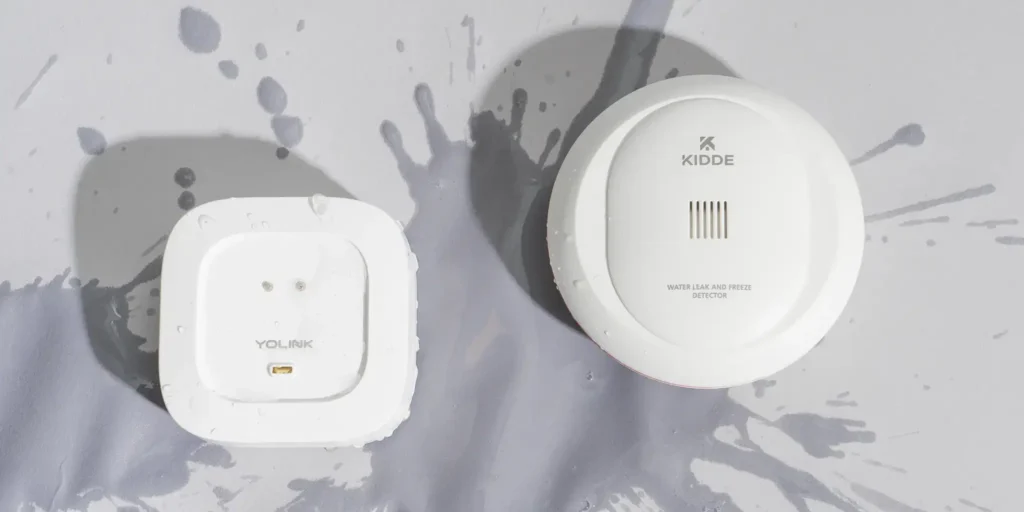
If there’s one smart device that doesn’t get nearly enough attention and also doesn’t demand any, it’s the smart leak sensor. While flashy gadgets grab headlines, this tiny tool can save homeowners thousands of dollars by catching water leaks early. Brands like Aqara, Eve Water Guard, and Moen Smart Water Detector offer compact sensors you can place under sinks, near washing machines, water heaters, or in basements—one small crack and leaks become likely.
The way they work is simple: as soon as they detect moisture, they send an instant alert to your phone. Some models can even trigger other smart devices, like shutting off a connected smart water valve to stop the flow entirely. Imagine getting a notification at work that your washing machine has sprung a leak, and instead of coming home to a flooded floor, the system shuts off the water before any damage spreads. If that isn’t smooth disaster mitigation, what is?
Real-world reviews highlight just how impactful these sensors can be. On Reddit’s r/smarthome, one user shared: “This $30 device saved me from a $3,000 repair bill when my water heater started leaking.” Others mention the peace of mind of knowing their vacation home or basement is being monitored 24/7 without hiring someone to check in.
Another underrated aspect is how they reduce cleaning chores indirectly. A small, unnoticed leak often leads to mold, mildew, and water stains—messy problems that require hours of scrubbing or even professional help. By stopping leaks early, these sensors prevent that cascade of chores before it begins.
Why are they underrated? Mostly because they’re invisible, and that’s how they keep things. They don’t have flashy features or an immediate “wow” factor—you set them and forget them. But when something goes wrong, they become the most valuable gadget in the house. In terms of cost-to-benefit ratio, smart leak sensors are one of the smartest investments you can make in 2025.
2. Smart Curtain & Blind Controllers – Automating Natural Light
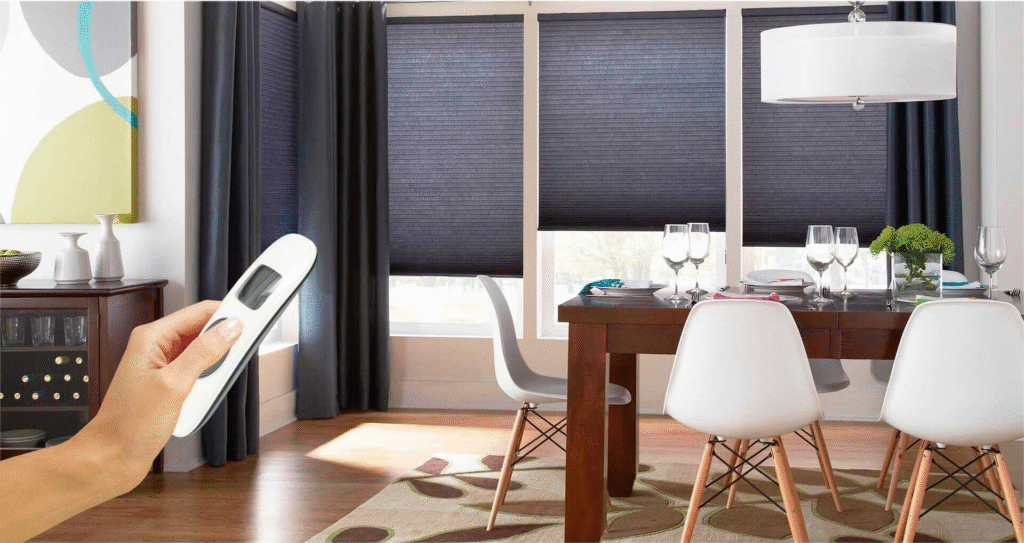
Curtains and blinds might not sound exciting, but automating them is one of those underrated hacks that makes a home feel truly smart. Devices like the SwitchBot Curtain 3, Aqara Curtain Driver, or even motorized retrofit kits can turn any standard curtain or blind into a hands-free system without replacing your existing setup.
The benefits are subtle but powerful. With automation, your curtains can open in the morning to let in sunlight and help wake you naturally with the morning sun, then close at night for complete nighttime privacy—all without you touching a thing. This isn’t just about convenience, it’s also about health and efficiency. Exposure to morning light helps regulate your circadian rhythm, while closing blinds during hot afternoons keeps rooms cooler, reducing strain on your air conditioning and your pocket.
Real users often describe how this small change improved daily routines. On Amazon, one reviewer wrote: “I thought it was silly at first, but now my curtains open every morning at 7 a.m.—I wake up gently instead of to a blaring alarm.” Another noted how scheduled curtain closures kept their living room cooler, cutting down on both cleaning dust and energy costs.
Integration with smart assistants makes it even better. You can tie curtain controllers into routines: “Hey Google, movie time” could dim the lights and close the curtains automatically. For cleaning, bright daylight through opened curtains helps spot dust or smudges you’d otherwise miss, which is why some homeowners call it their “natural cleaning assistant.” And one that doesn’t complain.
Why are these gadgets underrated? Mostly because they’re overlooked compared to big-ticket devices. People don’t realize how much manual effort goes into opening and closing blinds every day until they no longer have to do it. Over time, those small daily actions add up, and once automated, they make a home feel effortlessly well-managed.
In 2025, as retrofit kits get cheaper and quieter, smart curtain and blind controllers are becoming one of the best-value upgrades you can add to a home. They don’t scream “futuristic gadget”—they simply blend in, making comfort and efficiency automatic.
3. Smart Air Quality Monitors – Breathing Cleaner, Living Smarter
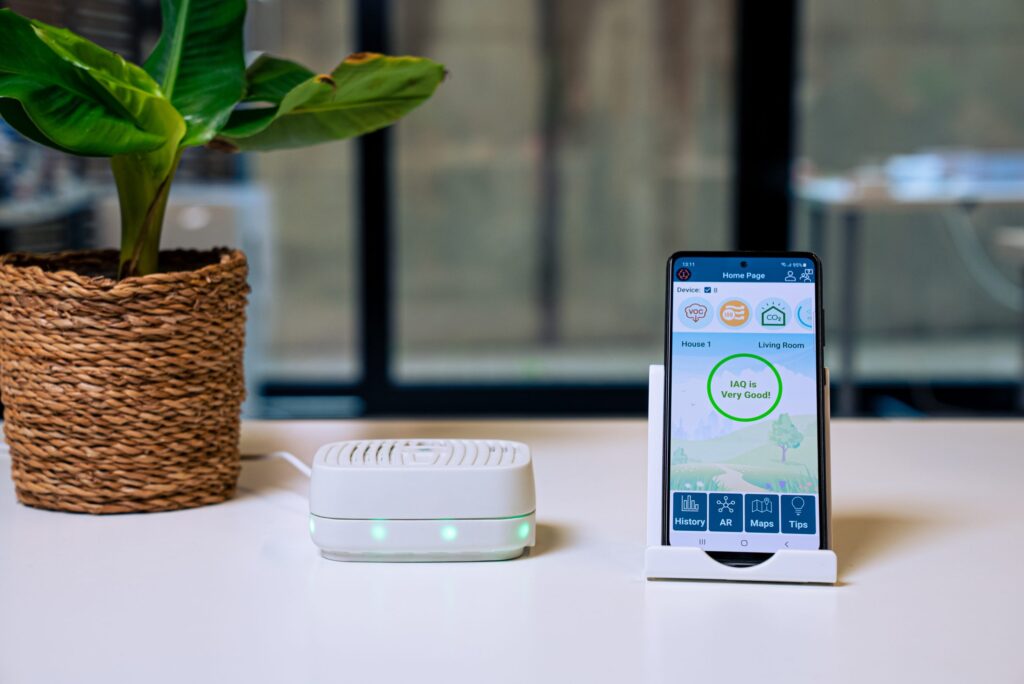
Air quality is something most people don’t actively think about until there’s a visual problem or a health concern—dust buildup, seasonal allergies, or worse, hidden pollutants like carbon monoxide or VOCs (volatile organic compounds). That’s why smart air quality monitors are the underdog smart home gadgets of 2025. Devices like the Airthings View Plus, Awair Element, and Amazon Smart Air Quality Monitor keep a constant eye on your indoor environment and give you actionable insights to improve it.
These compact devices track metrics like PM2.5 particles (dust, smoke), CO₂ levels, humidity, and temperature, often in real time. If the air becomes stale or unhealthy, you get an alert on your phone or a push notification through your smart home hub. Some can even trigger automations, like switching on an air purifier or opening a smart window so you don’t have to when CO₂ levels rise too high.
The benefits extend well beyond health. Cleaner air makes homes easier to maintain—less dust settling on furniture, fewer odors clinging to fabrics, and reduced mold growth in damp environments. Parents of kids with asthma often mention how these devices provide peace of mind, while allergy sufferers appreciate knowing when pollen levels indoors are creeping up. This is important since after the fact for allergic people could result in severe discomfort. Take it from us, we know them allergies.
Real-world reviews emphasize the “aha” moments. One Reddit user wrote: “I thought my air was fine until my monitor showed spikes every time I cooked. Now my exhaust fan turns on automatically.” Another reviewer praised their Airthings unit for showing humidity patterns, which helped them prevent mildew in the bathroom. No more of those dark, greasy streaks that appeared from nowhere.
So what’s up with them not being spotted? Probably because they’re preventive rather than flashy. You don’t notice their impact immediately, the way you do with a robot vacuum zooming about. But over time, they create a healthier, cleaner living space, and they often pay for themselves by preventing long-term issues like mold remediation.
It’s 2025, and more people focus on wellness and sustainable living; that’s why smart air quality monitors are stepping out of the shadows. Quiet, data-driven, and practical, they’re the kind of gadget you don’t realize you need until you have one, and then you’ll wonder how you lived without it with those crazy allergies.
4. Smart Outlets with Energy Monitoring – Cutting Hidden Costs and Chores
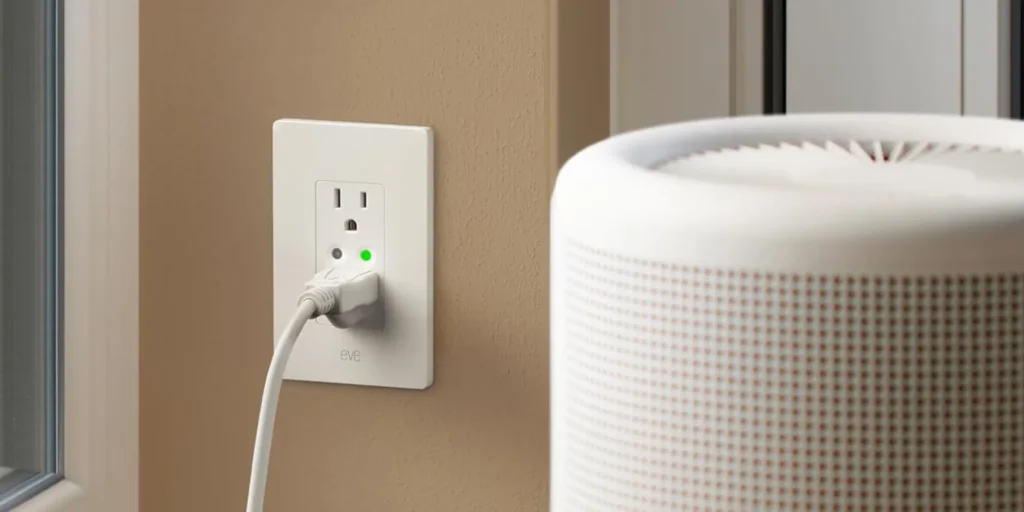
At first glance, smart outlets look simple: they let you turn appliances on and off remotely. But the real magic—and why they’re one of the most underrated smart gadgets of 2025—comes when they include energy monitoring. Models like the TP-Link Tapo P110, Emporia Smart Plug, and Meross Mini don’t just automate appliances; they show you exactly how much electricity each one consumes.
Why does this matter? Because many appliances quietly drain power even when they’re “off.” Yes, sir, your bills haven’t been stacking up for no reason. TVs in standby mode, microwaves, routers, or game consoles can add significant costs over time. Smart outlets reveal these hidden energy hogs and let you schedule them to turn off automatically when not in use. One Reddit user in r/homeautomation shared: “I found my old dehumidifier was costing me $30 a month just to run. The plug paid for itself in two weeks.”
The automation aspect also reduces daily chores. Instead of remembering to unplug the iron, you can schedule it to shut off automatically. Instead of turning on the coffee maker every morning, you can have it prepped and powered at 7 a.m. sharp. Feels nice to walk into the aroma of coffee in the morning, right? For families, grouping multiple smart plugs in a routine—like powering down all kids’ devices at bedtime—saves nagging and manual effort. No more helicopter parenting needed.
Beyond cost savings, energy monitoring creates awareness. Many homeowners discover just how inefficient certain appliances are, leading to smarter replacement decisions. And for eco-conscious households, the ability to track usage and cut waste is a simple but powerful sustainability step.
Why isn’t anyone talking about them? Because they don’t have the futuristic appeal of robot vacuums or smart speakers. They’re inexpensive, low-profile, and often overlooked in favor of flashier gadgets. But in practice, they’re one of the most useful smart devices you can own—saving money, reducing stress, and quietly automating repetitive routines.
In this day and age, with energy prices still a concern, smart outlets with monitoring are finally starting to get the recognition they deserve. Affordable, reliable, and endlessly practical, they’re sort of like the unsung heroes of a modern smart home.
5. Smart Laundry Detergent Dispensers & Auto-Dosing Systems – No More Guesswork in Laundry
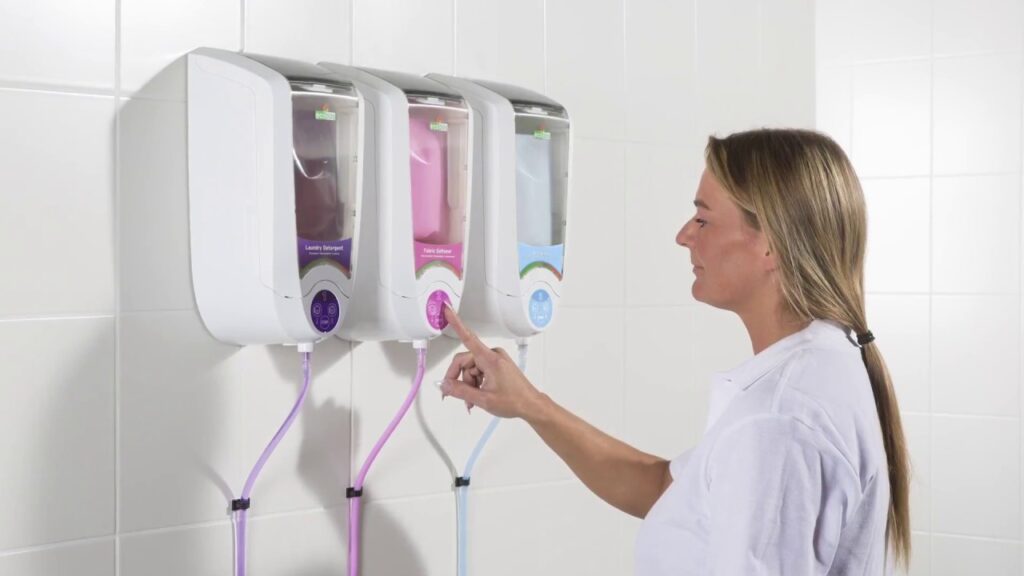
Laundry is one of those chores that feels like it’s on a never-ending rotation, and small inefficiencies make it worse—like pouring too much detergent (which leaves residue and wastes money) or too little (which means rewashing clothes). Rewashing the same lot? Give me a break, you think. That’s where smart detergent dispensers and auto-dosing systems come in to break the cycle, making them one of the most underrated smart home upgrades of 2025.
High-end washing machines from brands like LG, Samsung, and Bosch now include built-in auto-dosing technology. You fill a compartment with detergent, and the machine automatically dispenses the exact amount needed based on load size, fabric type, and soil level. Some systems can hold enough detergent for 20–30 washes, meaning you don’t even think about measuring soap for weeks at a time.
For those not upgrading machines, standalone devices like the Tero Laundry Dosing System are emerging, designed to connect with existing washers. These add-ons bring the same convenience without the high cost of replacing your appliance.
The benefits go beyond convenience:
- Time savings: No more stopping to measure and pour for each load.
- Better cleaning: Clothes come out consistently fresh, with no detergent stains or buildup.
- Cost efficiency: You use only what you need—some users report cutting detergent consumption by 30%.
- Environmental impact: Less waste means fewer chemicals down the drain.
Real-world feedback is strong. On an appliance forum, one owner wrote: “My Bosch auto-dosing washer is the best purchase I’ve made in years. I haven’t touched a detergent bottle in months.” Another noted how it eliminated arguments at home—since nobody had to “do laundry wrong” anymore. That means your bedroom arguments could have other topics now.
If it’s so important, why doesn’t anyone tell us? Simple. Because it’s not flashy. And nobody goes around showing off their detergent dispenser to guests unless you’re a laundry nerd. But the fact is, it directly reduces one of the most repetitive micro-chores in a household. And like most great automations, once you get used to it, you’ll wonder how you ever lived without it.
As laundry machines get smarter and retrofit solutions spread, auto-dosing is quickly becoming a hidden hero in household automation. It doesn’t grab headlines, but it makes laundry a whole lot easier.
6. Smart Compost & Trash Solutions – Making Waste Less of a Chore
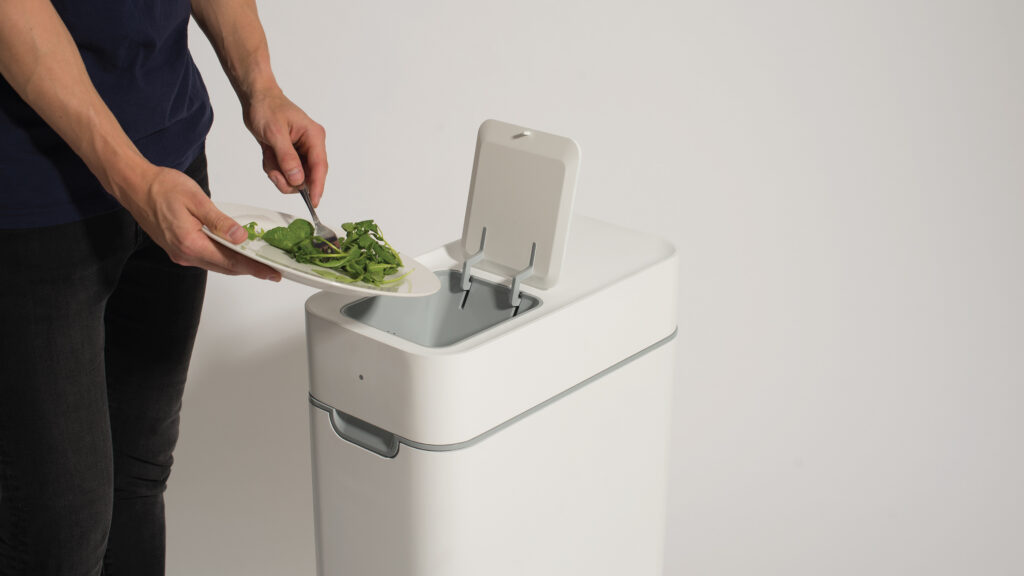
Taking out the trash and managing waste isn’t glamorous. In fact, it feels downright dirty, quite literally, but it’s one of the most constant household chores. That’s why smart trash cans and composters are among the most underrated smart home gadgets of 2025—they don’t just reduce effort, they make one of the least pleasant jobs cleaner and easier.
Smart trash cans like the Townew Self-Sealing Bin or iTouchless Deodorizer Can go far beyond a lid that opens with a motion sensor. Townew, for example, can seal a full bag automatically at the press of a button, then load a new liner by itself. No more wrestling with messy bags or dealing with leaks. Odor control features—like built-in filters or deodorizer cartridges—help keep kitchens smelling fresher without constant attention.
For eco-conscious households, smart composters are equally transformative. Devices like the Lomi Smart Composter or Vitamix FoodCycler turn food scraps into compost automatically in just hours or days, instead of letting them rot in the bin. This not only reduces odors and trips to the trash but also creates a useful byproduct for gardening. You’re not dreaming, this one’s for real, you garden gnome you.
Real-world feedback often highlights surprise at how much these gadgets improve daily life. One reviewer of the Townew bin said: “It sounded silly, but not having to tie garbage bags is honestly life-changing.” Another noted that their Lomi reduced weekly trash output by nearly half, cutting down on garbage collection costs and effort.
Why do people remain hush-hush about it? Because waste management isn’t a glamorous topic. People don’t think about automating it until they realize how often it interrupts their routines. But once you experience a self-sealing bin or a composter that eliminates smelly food scraps, it feels like a chore you’ll never go back to doing manually. Nobody wants that ‘stank’ up their nose.
In today’s time, as sustainability becomes more important, smart compost and trash solutions are finally gaining traction. They may not be flashy centerpieces, but they quietly tackle one of the most annoying parts of home life, turning waste into something almost effortless.
7. Smart Key & Lock Trackers – Ending the Daily Hunt for Lost Keys
![]()
Few things are as frustrating—or time-wasting—as misplacing your keys just when you need to leave the house. Hey, everyone has the right to be a little absent-minded, That’s why smart key and lock trackers deserve far more attention in 2025. They may not look as high-tech as those shiny robot vacuums or voice assistants, but they solve a universal, everyday problem: never losing your keys (or time) again.
Devices like Tile Pro, Apple AirTag, and Chipolo ONE are popular examples, but what makes them especially underrated today is how they integrate with smart locks and home automation systems. For instance, attaching an AirTag to your keys means you can locate them instantly through your phone, complete with sound alerts and precision tracking. Pair that with a smart lock system like August Wi-Fi Smart Lock or Yale Assure Lock, and you don’t even need to carry a key at all—your phone or a PIN code becomes the entry method.
The combination is powerful:
- Track keys when misplaced – no more frantic searching.
- Unlock doors remotely – handy for guests, deliveries, or kids coming home.
- Create routines – locking your smart lock can trigger your vacuum or lights to start, weaving security and cleaning together.
Users consistently praise how these “quiet” gadgets remove stress from daily routines. A Reddit user shared: “The number of mornings I’ve saved not tearing the house apart for keys is worth every penny.” Another pointed out that smart locks reduced arguments at home because nobody had to remember who had the spare key. Find better topics to argue on, friends.
Because they’re practical rather than flashy, they remain elusive. People don’t usually show off their smart key tracker the way they brag about a new voice assistant. Yet when it comes to actual time saved and stress avoided, these small gadgets often outperform the bigger names.
In the era that we live in, as smart home ecosystems become more integrated, smart keys and locks are proving to be quite the quiet heroes. They don’t just save time—they reduce the daily friction of living, helping your home feel more secure and more manageable at once.
8. Smart Bed Sensors & Sleep Monitors – Automating Rest for a Smarter Home
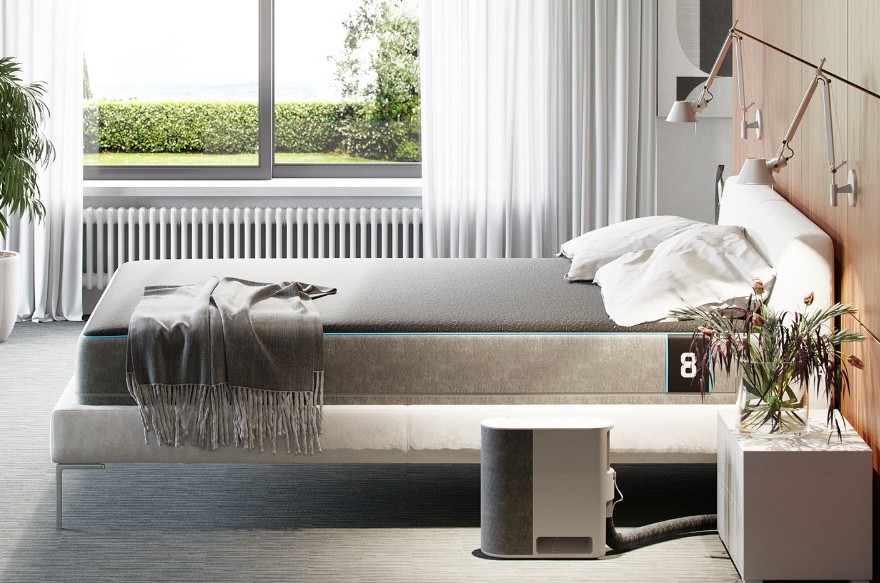
When people think of smart homes, something as mindless as sleep usually isn’t the first thing that comes to mind. But in 2025, smart bed sensors and sleep monitors are quietly becoming one of the most valuable, underrated gadgets for daily life. Devices like the Withings Sleep Analyzer, Eight Sleep Pod Cover, and Sleep Number Smart Bed go beyond tracking—they integrate with your smart home to create a healthier, more automated sleep environment.
These devices slide under your mattress or connect to your bed to monitor metrics such as heart rate, breathing patterns, movement, and sleep cycles. But the real magic comes from what they do with that information. For example:
- If you’re in deep sleep, your smart lights and alarms hold off a few extra minutes before waking you.
- If your heart rate or breathing shows restlessness, the device can trigger your thermostat to cool the room for better sleep.
- As you wake, they can gradually brighten lights and open smart curtains for a natural sunrise effect.
Users often mention how these devices don’t just provide data—they create actionable routines. One Amazon reviewer said: “My Withings pad turns down the lights and lowers the AC as soon as I get into bed, it feels like the house tucks me in.” A house that takes care of you and not the other way around? That’s something, isn’t it? Another noted that waking up with light and curtains instead of an alarm was the “least stressful mornings I’ve ever had.”
For people with sleep issues, these devices are invaluable. They highlight patterns you might not notice—like late-night restlessness linked to high CO₂ levels in the room, which can then be addressed with a purifier or ventilation automation.
Why do they remain hidden from the naked eye? Because they’re not as visible or have that “wow” factor as a robot vacuum. Yet sleep is something you spend one-third of your life doing. Optimizing it with automation improves energy, mood, and productivity far more than many flashier gadgets ever could.
In short, smart bed sensors and sleep monitors aren’t just sleep trackers—they’re the bridge between personal health and home automation. Subtle, quiet, and often overlooked, they may be one of the smartest long-term investments for your home.
Underrated Smart Home Gadgets (2025)
| Gadget | Example Brands | Main Benefit | Why Underrated |
| Smart Leak & Water Sensors | Aqara, Eve Water Guard, Moen | Detect leaks early, prevent costly water damage | Preventive, invisible until needed |
| Smart Curtain & Blind Controllers | SwitchBot Curtain 3, Aqara Curtain Driver | Automate natural light for energy savings & routines | Seen as a luxury, but improves daily comfort |
| Smart Air Quality Monitors | Airthings, Awair, Amazon | Track dust, CO₂, humidity, VOCs for healthier living | Preventive, benefits are long-term not immediate |
| Smart Outlets with Energy Monitoring | TP-Link Tapo, Emporia, Meross | Automate appliances, reveal hidden energy drains | Simple design hides their real money/time value |
| Smart Laundry Auto-Dosing Systems | LG, Samsung, Bosch, Tero | Dispense perfect detergent amount automatically | Overlooked because it’s built into appliances |
| Smart Compost & Trash Solutions | Townew, iTouchless, Lomi | Auto-sealing bags, odor control, eco composting | Waste management isn’t “glamorous,” but essential |
| Smart Key & Lock Trackers | Apple AirTag, Tile, Yale, August | Prevent lost keys, integrate with smart locks | Overshadowed by bigger security gadgets |
| Smart Bed Sensors & Sleep Monitors | Withings, Eight Sleep, Sleep Number | Automate lights, climate, and wake-up routines | Sleep optimization isn’t usually linked to smart homes |
Buying Guide – How to Choose the Right Underrated Smart Gadgets
When it comes to smart home upgrades, the loudest devices get most of the attention—robot vacuums, smart speakers, video doorbells. But often it’s the smaller, underrated gadgets that quietly make the biggest difference in daily life. The trick is knowing which ones will genuinely add value to your routines and which might end up gathering dust. Here’s what to keep in mind before buying.
1. Solve a Real Pain Point First
The best underrated gadgets are the ones that target everyday annoyances. Do you worry about leaks? Start with a smart water sensor. Constantly misplace your keys? Try a smart tracker with lock integration. Struggle with smelly garbage or overuse detergent in laundry? A smart trash can or auto-dosing system will save time and frustration. Focus on your household’s pain points instead of buying what looks trendy. Don’t fall for TikTok marketing stunts.
2. Look for Seamless Integration
An underrated gadget becomes powerful when it connects with the rest of your smart ecosystem. For example, a smart bed sensor is more than a sleep tracker—it’s valuable when it tells your lights to dim and thermostat to cool as you fall asleep. Always check if the device works with Alexa, Google Assistant, or Apple HomeKit. Future-proofing with Matter-compatible gadgets is a smart move in 2025, ensuring cross-brand compatibility.
3. Prioritize Automation, Not Just Alerts
Some gadgets only notify you when there’s an issue (like air quality or leaks). The more advanced ones can trigger automations: a leak sensor shutting off a smart valve, or an air monitor switching on a purifier. If your goal is to reduce chores and stress, prioritize devices that take action, not just those that inform you.
4. Check Ease of Setup & Maintenance
The most understated gadgets are often “set and forget.” A water sensor under the sink, a trash can that seals bags, or a smart outlet monitoring power shouldn’t need constant fiddling. Before buying, check reviews for app reliability and how often batteries or filters need changing. If maintenance feels like another chore, the device defeats its purpose.
5. Balance Budget with Value
Underrated gadgets are usually cheaper than headline devices, but their value comes from prevention and consistency. A $40 leak sensor might save you thousands in repair costs. A $100 compost system can cut garbage trips in half. When weighing cost, think in terms of time saved, stress reduced, or disasters prevented rather than just the upfront price.
6. Start Small, Then Expand
Instead of buying everything at once, test one underrated gadget that solves a real need. Many homeowners start with smart plugs or leak sensors and quickly realize how impactful they are. From there, it’s easier to justify adding more subtle helpers to your system.
Final Tip
Underrated smart home gadgets work because they blend into your life. They don’t demand attention, yet they solve problems you didn’t realize could be automated. By choosing devices that integrate smoothly, prevent hassles, and require little upkeep, you’ll build a home that feels less like a showroom and more like a partner in daily living. Remember, beauty doesn’t last forever, but reliability does.
FAQs – Underrated Smart Home Gadgets
1. Why are some smart home gadgets considered underrated?
They’re underrated because they don’t make headlines or look futuristic, but they quietly solve everyday problems. While robot vacuums and smart speakers get all the attention, devices like leak sensors, smart outlets, or air quality monitors often provide bigger long-term benefits, from saving money on utilities to preventing costly disasters.
2. Are underrated gadgets less important than popular ones?
Not at all. In many cases, they’re more practical. A flashy gadget might impress visitors, but an underrated device like a water sensor or smart compost bin reduces chores, saves hours, or prevents damage. These devices prove their worth in the background, even if they’re not as glamorous.
3. Do these gadgets really integrate well with other smart home systems?
Yes—most modern underrated devices support Alexa, Google Assistant, or Apple HomeKit, and many in 2025 now support Matter, the new standard that ensures cross-brand compatibility. This means you can pair a water sensor with your voice assistant, or let an air monitor trigger your smart purifier, creating smooth automations.
4. Are these devices expensive to maintain?
Generally, no. Most underrated gadgets are low-maintenance. Leak sensors use long-lasting batteries, composters may require filter changes, and air monitors need occasional calibration. Compared to large appliances, upkeep is minimal, especially given the time and money they save in the long run.
5. Which underrated smart gadget should beginners start with?
It depends on your biggest frustration:
- Worried about hidden damage? Start with a smart leak sensor.
- Constantly losing things? Try a smart key tracker.
- Looking to save money? Go for smart outlets with energy monitoring.
- Want healthier air? Get a smart air quality monitor.
These small steps help you see the value of subtle automation without overwhelming you.
6. Are underrated smart gadgets worth it for renters?
Yes. Most are portable and don’t require permanent installation. Smart plugs, leak sensors, and air monitors can move with you to a new place. Even curtain controllers and trash solutions work without altering walls or wiring, making them renter-friendly.
7. What makes these gadgets different from bigger devices like smart vacuums?
Bigger devices handle obvious chores, while underrated gadgets address hidden friction points—like wasted energy, poor air, or smelly trash. They complement larger devices, filling in the gaps that most people don’t notice until they’re automated.
8. Do underrated gadgets really save money?
Yes. A $40 smart leak sensor can prevent thousands in water damage repairs. Smart outlets often cut 10–20% off energy bills by shutting down phantom loads. Even a self-sealing trash can saves money on wasted bags. These aren’t just conveniences—they can pay for themselves over time.

